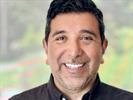Katie Clift 04 Jun 2024 // 2:35PM GMT

The landscape of healthcare communications and PR has changed drastically in recent years, and the transformations we’ve seen so far are only just the beginning.
This is the sentiment I shared with many PR & comms colleagues on-the-ground last week in Geneva for the 77th World Health Assembly, hosted by the World Health Organization.
A pivotal moment in the global health calendar, and one the world was closely watching, according to Reuters and some observers, as potentially “the single most important moment for the WHO since its 1948 creation,” the spotlight was not only on WHO but the various healthcare organizations vying for a voice on pertinent global health issues via side events, roundtables and traditional media pitching.
Healthcare PR is close to my heart. I started my PR career in Australia 15+ years ago representing NGOs focused on diabetes, then cancer, before relocating to Europe to apply my learnings to PR on global health challenges in developing countries. Most recently, I worked at the World Economic Forum managing corporate affairs and leading campaigns for its Centre for Health and Healthcare – covering everything from drug resistance to AI and tech in health, value in healthcare, global health equity and more.
I am also a breast cancer survivor, having been diagnosed in my 30s and understanding first-hand how important tailored, accurate and considered communications on healthcare need to be.
Over two decades, working both regionally and globally, I have watched the landscape of healthcare PR transform significantly. Attending this week’s World Health Assembly only further reinforced the trends that I have experienced are shaping healthcare PR, and its future.
Here’s a few key takeaways from the week:
Health communications require transparency
The impact of the pandemic and how communications were managed (from the initial outbreak to vaccine development and distribution, to a post-pandemic era) is one example of recent global events that have placed an emphasis on PR and communications to be more transparent when it comes to healthcare. Understandably, much of the media this week reported on the WHA’s intensive negotiations and efforts to boost the world’s ability to be better able to prevent and respond to future pandemics. It should serve as a reminder to all of us working in healthcare PR about the importance of transparency, honesty and clarity in health communications.
AI for health is king
It’s obviously no secret that the advancement of AI across industries is dominating communications, PR and media approaches for all types of organizations. Healthcare is no different. Being willing to comment on AI trends in health is crucial, as is clearly articulating how your organization contributes to the conversation / development of AI in health policy, innovation and manufacturing. This week during the World Health Assembly, a number of roundtables focused on the balance of equity, inclusion and protection while harnessing the potential of AI for health.
Looking ahead: climate change and health have momentum
With UNGA and COP29 looming, the demand for PR focus on climate and health is starting to build. The public want to know how organizations will safeguard public health from climate change impacts. They want evidence, data and strategies to mitigate the risks. A momentum is building (and will continue for coming months) in the global conversation, across digital and traditional media, on a new global health architecture that addresses climate change. Opinion editorials, interviews, media pitches and thought leadership that bring ideas and solutions to the forefront will be valued by media and the public greatly.
Prevention, promotion, protection.
A PR focus on promoting health initiatives, messages of prevention, and protecting health and wellbeing for all, remain communication stalwarts. Using your organization’s voice, personal stories, community learnings, global insights and data to share messages of awareness, prevention and support on a range of health issues was an effective strategy when I started in the space 15+ years ago, and it still is today. Messages on early detection of cancer are as relevant (if not more so) than ever before. Improving the quality of care and healthcare education in developing countries is crucial. Sharing tips and advice to help people live as healthy lives as possible may seem like standard PR and communications messages – but they are relevant, in-demand and essential for societies everywhere. Side events during WHA77 reinforced these messages wonderfully during this week.
As with any large event, it’s important to keep the conversations raised during this week going over coming months. Many commitments were made, partnerships forged and progress continued on central healthcare issues that are impacting communities. The best PR strategies employed by organizations will take key messages from the week and continue to build on them through innovative media and communications approaches, reaching and engaging audiences around the world over coming months.
Author
Katie Clift is director of may:be agency, World Economic Forum moderator and MBA scholar of Warwick Business School.



































.jpg)






.tmb-135x100.jpg)










